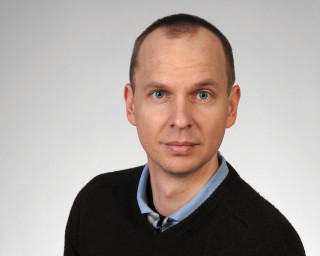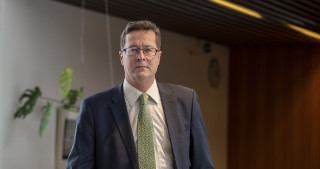External funding has given a boost to the development of research and education in the forest-based bioeconomy and medical computing alike. Research leads to increasingly accurate diagnostics and new surgical techniques, and provides tools for building an increasingly low-carbon society.
The University of Eastern Finland enjoys international recognition in the fields of the forest-based bioeconomy, and medical computing. External funding has played a key role in several new openings that contribute to climate change mitigation and better patient care.
“Among other things, we study how the development of imaging techniques and data analysis can improve the procedures used in micro- and neurosurgery. For instance, we are among the first in the world to develop eye-tracking for surgical techniques,” Associate Professor Roman Bednarik from the School of Computing says.
Bednarik’s research group collaborates with the university’s School of Medicine and Kuopio University Hospital, KUH. Together, they have applied advanced computational techniques, such as eye-tracking and optical spectral imaging, to research addressing teaching methods used in microsurgery, and factors that contribute to or threaten surgery outcomes, such as experience, noise and workload.
“This line of research has promoted the development of a new culture that supports clinical training. It has also promoted the popularity of 3D printing methods, virtual surgery planning and simulation-based education among OR staff,” Director of KUH’s Microsurgery Centre Antti-Pekka Elomaa, MD, says.
Together with Savonia University of Applied Sciences, the university has developed a new study programme in medical computing in response to the competence needs arising from specialised health care.
“There is a need for experts with a medical background and solid skills in computer science,” Bednarik says.
Without external funding, it wouldn’t be possible to create something as extensive as this.
Roman Bednarik
Associate Professor

Funding granted by the Academy of Finland has served as a foundation for establishing collaboration between the School of Computing, the School of Medicine, and KUH. This collaboration has also been funded by Business Finland and Emil Aaltonen Foundation.
“External funding has played a crucial role in this. Without external funding, it wouldn’t be possible to create something as extensive as this,” Bednarik says.
So far, the Microsurgery Centre has been focusing on basic research, but the objective is to apply the findings in clinical medicine as extensively as possible.
“Our basic research has created a solid foundation for clinical research. For instance, the Finnish Medical Foundation provides funding for research that explores the fine optical characteristics of central nervous system tumours that have irregular borders,” Elomaa says.

Forest-based bioeconomy as a source of sustainable business activities and livelihoods
External funding has also played an important role in the development of research and education in the forest-based bioeconomy. Saastamoinen Foundation has supported the implementation of the University of Eastern Finland’s Bioeconomy Policy by more than 1 million euros in 2016–2021. The forest-based bioeconomy can, for its part, lead the way towards a society that is increasingly low carbon and energy efficient.
“The first action under Saastamoinen Foundation’s funding was the preparation of a Bioeconomy Policy for the University of Eastern Finland. The work has proceeded well, and we’ve achieved the majority of our goals,” Professor Jyrki Kangas says.
Among other things, the work carried out with Saastamoinen Foundation’s funding made it possible for the university to join the European Bioeconomy University, EBU, which was established in the summer of 2019. The EBU, on the other hand, has already secured funding for the development of two bioeconomy-related study modules. Saastamoinen Foundation’s funding has also been used to make new domestic openings in education, including an online bioeconomy training, which is open to everyone.
“In research, a clear high point in this development was the Academy of Finland’s decision in November to select the UNITE consortium to the Flagship Programme. Besides research, societal impact plays an important role in UNITE. The consortium makes bold new openings in the field of forest-related research and innovations.
A clear high point in research was the Academy of Finland’s decision to select the UNITE consortium to the Flagship Programme.
Jyrki Kangas
Professor

The University of Eastern Finland is a sought-after partner in research addressing the forest-based bioeconomy and foresight. Indeed, one of the goals of the project funded by the foundation has been to strengthen the university’s research in forest-based bioeconomy foresight and raising it to an international level. The project has also led to the recruitment of a new professor in the forest-based bioeconomy to the School of Forest Sciences.
“We are a strong player in the EBU as well as in the regional GreenHUB innovation ecosystem. Both of these platforms are good for significantly increasing the impact of bioeconomy research and education for sustainable business activities and livelihoods.”
Photo on top: The University of Eastern Finland was one of the first higher education institutions in the world to prepare a university-level Bioeconomy Policy. The policy guides the development of research, education and impact relating to the bioeconomy.. Photo Raija Törrönen.


